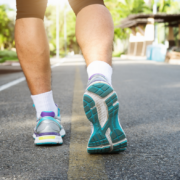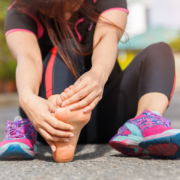The Pros and Cons of Having Wide Feet
Have you ever had to squeeze into a tight shoe that you thought would fit? You might have wide feet, and while this isn’t inherently a problem, it comes with its own set of challenges, particularly when it comes to finding appropriate footwear. At Carrollton Foot Center, we want our patients to better understand their natural foot shape, which is why, in this blog post, we’re uncovering all things about foot width, from good to bad (yes, there are some pros).
How to Tell If You Have Wide Feet
If you’re reading this article, you may already have a clue. If your toes always feel cramped or if your vamp is never quite comfortable, this indicates that your feet don’t fit the standard width of most shoe manufacturers.
Foot width is typically measured at the widest part of your foot, that is, across the ball of your foot, right under the toes. Go to any shoe store, and they’ll have the Brannock device to help you find an accurate fit. However, getting professionally measured by a podiatrist is the best way to measure, especially if you’re already having issues.
Note that another great tell is genetics. They play a significant role in determining foot width; if your parents have wide feet, chances are you might, too.
The Pros of Wide Feet
Before we dive into what foot problems you may already have, let’s discuss some benefits of wide feet.
A broader foot often provides a more stable base for balance, so it could reduce the risk of falls, which could be lifesaving as we age. This increased surface area can also lead to better weight distribution across the foot’s structure when properly supported, which reduces pressure points throughout the feet that a narrower shape may be susceptible to.
When correctly fitted, wide feet can even contribute to the durability of shoes by preventing the material from being stretched and strained excessively.
Foot Conditions Caused by Wide Feet
While wide feet themselves don’t directly cause specific conditions, they can be a risk factor for them when squeezed into ill-fitting footwear, such as:
- Bunions: Although often hereditary, narrow shoes on a wide foot can severely exacerbate the condition by pushing the big toe inward.
- Hammertoes: The cramped space forces your toes to curl.
- Corns and Calluses: Constant rubbing against shoe sides or between squished toes results in thickened, painful skin.
- Ingrown Toenails: Pressure from a narrow toe box can force the nail into the surrounding skin.
- Metatarsalgia: If the shoe’s forefoot area is too narrow, it compresses the metatarsals and the nerves between them.
(And let’s not forget: blisters).
Consult with Board-certified podiatrist Dr. Naghmeh Lilly Khavari, a knowledgeable professional who is dedicated to her patients in Denton, Dallas, and Collin Counties. Dr. Khavari treats a wide range of conditions, from ingrown toenails to foot and ankle injuries. Call Carrollton Foot Center’s office (located in Carrollton, Texas) at (469)-998-3668 to schedule your first appointment today!




